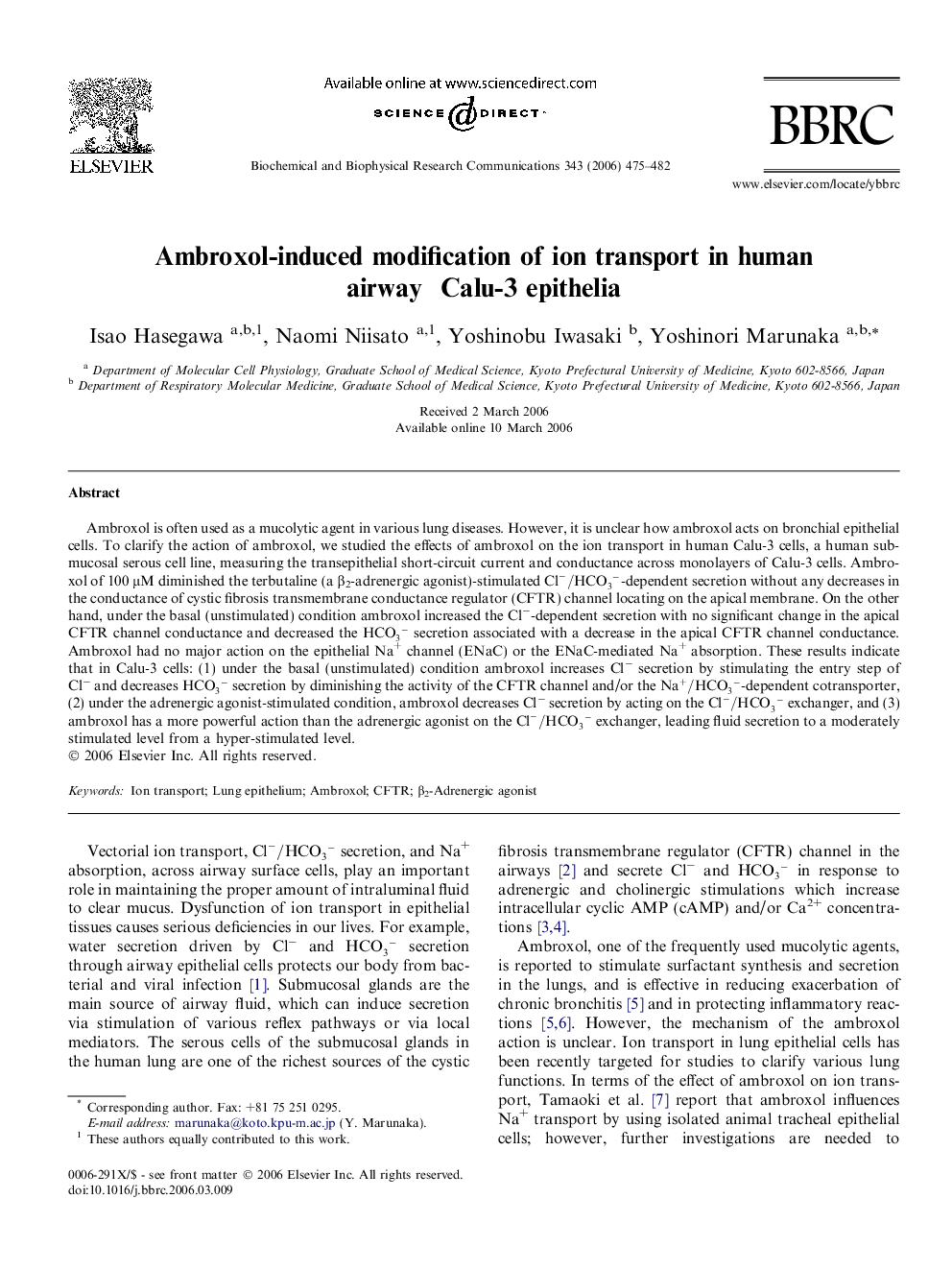| Article ID | Journal | Published Year | Pages | File Type |
|---|---|---|---|---|
| 1940010 | Biochemical and Biophysical Research Communications | 2006 | 8 Pages |
Ambroxol is often used as a mucolytic agent in various lung diseases. However, it is unclear how ambroxol acts on bronchial epithelial cells. To clarify the action of ambroxol, we studied the effects of ambroxol on the ion transport in human Calu-3 cells, a human submucosal serous cell line, measuring the transepithelial short-circuit current and conductance across monolayers of Calu-3 cells. Ambroxol of 100 μM diminished the terbutaline (a β2-adrenergic agonist)-stimulated Cl-/HCO3--dependent secretion without any decreases in the conductance of cystic fibrosis transmembrane conductance regulator (CFTR) channel locating on the apical membrane. On the other hand, under the basal (unstimulated) condition ambroxol increased the Cl−-dependent secretion with no significant change in the apical CFTR channel conductance and decreased the HCO3- secretion associated with a decrease in the apical CFTR channel conductance. Ambroxol had no major action on the epithelial Na+ channel (ENaC) or the ENaC-mediated Na+ absorption. These results indicate that in Calu-3 cells: (1) under the basal (unstimulated) condition ambroxol increases Cl− secretion by stimulating the entry step of Cl− and decreases HCO3- secretion by diminishing the activity of the CFTR channel and/or the Na+/HCO3--dependent cotransporter, (2) under the adrenergic agonist-stimulated condition, ambroxol decreases Cl− secretion by acting on the Cl-/HCO3- exchanger, and (3) ambroxol has a more powerful action than the adrenergic agonist on the Cl-/HCO3- exchanger, leading fluid secretion to a moderately stimulated level from a hyper-stimulated level.
